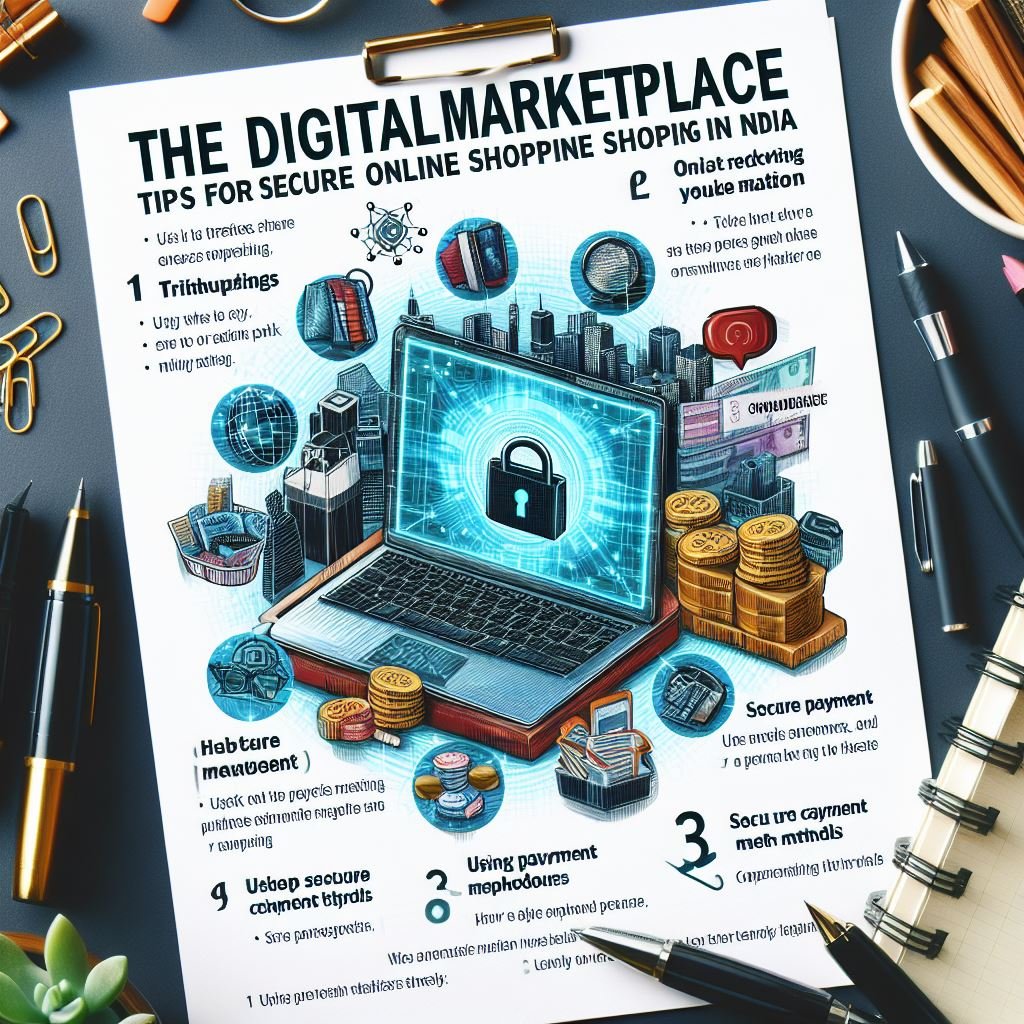
In the dynamic landscape of Indian e-commerce, the allure of online shopping has become increasingly irresistible. From the convenience of purchasing t-shirts, electronic goods like mobile phones and TVs, beauty products, and toys to the vast array of options available at our fingertips, the digital marketplace offers a world of possibilities. However, amidst the excitement, it’s crucial to tread cautiously and arm ourselves with knowledge to avoid falling prey to online fraud and scams. In this comprehensive blog post, we’ll explore essential tips for safe online shopping in India, including key considerations to keep in mind, popular Indian e-commerce websites, and the alarming statistics surrounding online fraud.
Understanding the Impact of Online Fraud
1. Alarming Statistics: According to recent reports, online fraud in India has been on the rise, with thousands of cases reported each year. The financial losses incurred by customers due to online fraud amount to millions of rupees annually, highlighting the severity of the issue.
2. Types of Online Fraud: Online fraud encompasses various tactics, including phishing scams, identity theft, and counterfeit product scams. Customers must remain vigilant and adopt preventive measures to mitigate the risk of falling victim to fraudulent activities.
3. Implications for Consumers: Beyond financial losses, online fraud can have far-reaching consequences, including compromised personal information and damage to reputation. The psychological toll of falling victim to online scams can be significant, leading to mistrust and reluctance to engage in online transactions.
Ensuring Secure Online Shopping
1. Verify the Website’s Credibility: Stick to reputable Indian e-commerce websites such as Flipkart, Amazon India, Ajio and Myntra. Look for customer reviews and ratings to gauge the reliability of the platform. Avoid purchasing from unfamiliar or suspicious websites to mitigate the risk of fraud.
2. Secure Payment Methods: Opt for secure payment options like credit cards, debit cards, or trusted payment gateways such as Paytm, Gpay and PhonePe. Avoid sharing sensitive banking information over unsecured networks or with unknown sellers.
3. Beware of Phishing Attempts: Exercise caution when clicking on links in emails or text messages claiming to offer exclusive deals or discounts. Verify the authenticity of the sender and website before providing personal information or making purchases.
4. Check for Secure Checkout: Look for indicators of a secure checkout process, such as HTTPS protocol and a padlock icon in the browser’s address bar. Avoid entering payment details on websites that lack proper encryption measures.
5. Read Product Descriptions and Policies: Thoroughly read product descriptions, including size charts and specifications, to ensure a satisfactory purchase. Familiarize yourself with the return and refund policies of the e-commerce platform to facilitate hassle-free returns if necessary.
Tips to Safeguard Against Online Fraud

1. Stay Informed: Keep abreast of the latest developments in online security and fraud prevention through reputable sources and news outlets. Educate yourself about common scam tactics and red flags to watch out for while shopping online.
2. Strengthen Password Security: Use strong, unique passwords for each online account and consider implementing two-factor authentication for an added layer of security. Regularly update passwords and avoid sharing them with others to minimize the risk of unauthorized access.
3. Exercise Caution with Personal Information: Limit the amount of personal information shared online and refrain from providing sensitive details unless absolutely necessary. Be wary of unsolicited requests for personal information and verify the legitimacy of the requester before responding.
4. Monitor Account Activity: Regularly review bank and credit card statements for any unauthorized transactions or suspicious activity. Report any discrepancies or concerns to your financial institution promptly to prevent further losses.
Avoidable Errors When Making Online Payments
When it comes to online payments, avoiding certain pitfalls is crucial to safeguarding your personal and financial information. Here are several things to avoid while making online payments:
- Using Public Wi-Fi: Avoid making online payments while connected to public Wi-Fi networks, as they may not be secure. Hackers can intercept your data, including credit card information and passwords, when transmitted over unsecured connections.
- Clicking on Suspicious Links: Be cautious of clicking on links in emails, text messages, or pop-up ads, especially if they seem suspicious or unsolicited. These links could lead to phishing websites designed to steal your information.
- Ignoring HTTPS and Padlock Icon: Before entering any sensitive information, ensure that the website’s URL starts with “https://” and displays a padlock icon in the address bar. This indicates that the connection is secure and encrypted.
- Saving Payment Information on Untrusted Sites: Avoid saving your payment information on websites that you don’t trust completely. While it may be convenient, storing your credit card details on insecure platforms increases the risk of unauthorized access and fraud.
- Providing Unnecessary Personal Information: Only provide the minimum amount of personal information required for the transaction. Be wary of websites or payment forms that ask for excessive details beyond what’s necessary for the purchase.
- Using Weak Passwords: Avoid using weak or easily guessable passwords for your online accounts, especially those associated with payment methods. Use strong, unique passwords or passphrases to protect your accounts from unauthorized access.
- Falling for Phishing Scams: Watch out for phishing emails, texts, or calls that impersonate legitimate organizations or retailers. These scams often lure users into providing their login credentials or financial information under false pretenses.
- Overlooking Account Security Settings: Take advantage of security features offered by payment platforms, such as two-factor authentication (2FA) or biometric authentication. These additional layers of security can help prevent unauthorized access to your accounts.
- Ignoring Account Activity: Regularly monitor your bank and credit card statements for any unauthorized transactions or suspicious activity. Reporting fraudulent charges promptly can help minimize financial losses and mitigate further risks.
- Neglecting Software Updates: Keep your devices and software up to date with the latest security patches and updates. This helps protect against known vulnerabilities that cybercriminals may exploit to compromise your data.
- Sharing OTP: Never share your OTP or any other verification code with anyone, including friends, family, or customer service representatives. OTPs are designed to provide an additional layer of security by verifying your identity during online transactions. Sharing your OTP with others, intentionally or unintentionally, compromises this security measure and exposes you to the risk of unauthorized access to your accounts or fraudulent transactions.
Conclusion:
In the fast-paced world of Indian e-commerce, safe online shopping requires diligence, awareness, and informed decision-making. By adhering to the tips outlined in this guide and patronizing trusted e-commerce platforms like Flipkart, Amazon India, Ajio, Meesho and Myntra, consumers can minimize the risk of falling victim to online fraud and enjoy a secure and fulfilling shopping experience. Remember, vigilance is key to navigating the digital marketplace safely and responsibly. By avoiding common pitfalls and practicing vigilance while making online payments, you can minimize the risk of falling victim to fraud and ensure a safer and more secure shopping experience.
By following these tips, you can enjoy the benefits of online shopping in India without compromising your security and privacy. Happy shopping! ️



